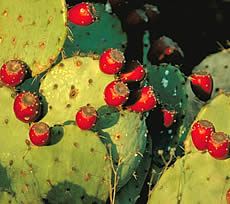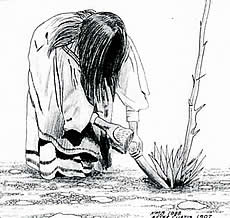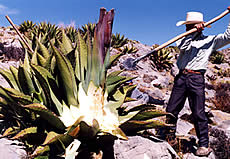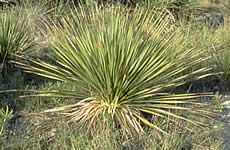A Thorny Subject



Indians knew that getting food from some plants took lots of skill. Some of the best foods were from spiky, prickly, or thorny plants. For instance, mesquite pods have to be picked from trees with wicked thorns. Blackberries grow on long thorny vines. And prickly pear cactus—well, it's very prickly! But the pads and fruits, called tunas, can be delicious.


Some of the most unexpected food sources are fibrous plants with big bulbs or roots such as sotol, lechuguilla, yucca, and agave. Tackling these plants meant dodging knife-like leaves with sharp pointed tips, a sometimes painful chore. Spanish explorers traveling across the Texas Plains tangled with these menacing plants. It's no wonder that one variety of these plants is now called Spanish Dagger!
Nature's Grocery Store Prehistoric Kitchen Blowing in the Wind Food Wheel Hot Rock Cooking
